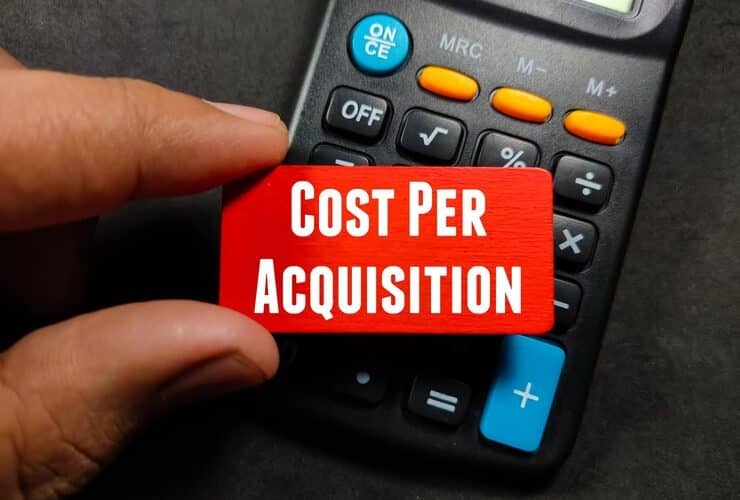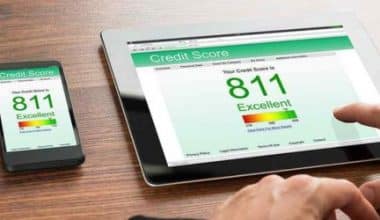Acquisition cost is a business term that describes how much money it costs to acquire equipment or property after all adjustments but before taxes. This term also describes the cost of taking over another company or purchasing an existing unit from another company. This type of cost provides businesses with an understanding of the true amount paid for assets before taxes are deducted. In this article, we’ll look at what acquisition cost is, the principles used to calculate it, and the customer acquisition cost formula and calculator.
What is Acquisition Cost?
Acquisition cost, also known as “book value” or “asset book value,” is a cost concept that applies when a company purchases a fixed asset such as a building, equipment, or land. The acquisition cost of a fixed asset is the cost paid by the company for the asset minus any sales tax. Adjustments such as incentives, discounts, and closing costs are included in the acquisition cost. This calculation is used to determine the true financial expense of an asset, which includes any expenses that were not included in the purchase price.
Acquisition costs are recorded on a company’s balance sheet under fixed assets. The balance sheet total cost will include all costs incurred to use the asset, including costs associated with getting the asset working and producing.
Customer Acquisition Cost
Customer acquisition cost (CAC) is the amount of money spent by a company to acquire a new customer. It aids in calculating the return on investment of efforts to expand their clientele. CAC is calculated by adding the costs of converting prospects into customers (marketing, advertising, sales personnel, and other expenses) and dividing the total by the number of customers acquired.
What is Customer Acquisition Cost?
Customer acquisition cost, abbreviated as CAC in marketing circles, describes how much a company must spend to acquire a new customer. CAC is becoming more popular as organizations use web analytics to make data-driven decisions. Whether companies are paying to have potential customers click on banners or investing in articles and graphic content, measuring their CAC helps them determine if they are getting their money’s worth when investing in growing their clientele.
Customer Acquisition Cost Formula
The customer acquisition cost formula is as follows:
Customer acquisition cost = sale and marketing expense/number of new customers
Where:
- Sales and marketing expenses include advertising and marketing spending, commissions and bonuses paid, marketers’ and sales managers’ salaries, and sales and marketing overhead costs over the measurement period.
- The number of new customers is the total number of customers acquired during the measurement period.
How to Calculate Customer Acquisition Cost
You can use a standard CAC formula to calculate customer acquisition cost by dividing the total cost of acquiring customers (cost of sales and marketing) over a given period by the total number of customers acquired over that period of time.
The customer acquisition cost (CAC) formula is very simple. Let’s begin with a simple formula, such as this:
Customer acquisition cost = sale and marketing expense/number of new customers
Customer Acquisition Cost Examples
Let’s look at examples that cover calculating customer acquisition cost using its formula.
Example 1: A Software Firm
Assume a CRM software firm invests $30,000 in a marketing campaign. Following the campaign, the company discovers that 1,200 new customers have begun to subscribe to their service.
The company expects to spend an extra $50,000 per year on technical and production costs for these new customers. This software company’s CAC would be:
Customer acquisition cost = ($50,000 + $30,000) ÷ 1,200 = $80,000 ÷ 2,000 = $40
This means that the software firm spent $40 on each new customer.
Example 2: A Retailer of Consumer Goods
Assume a consumer goods company spends $5,000 on sales and $1,000 on marketing in order to gain 1000 new customers. The CAC of the company is then calculated as follows:
CAC = ($5,000 + $1,000) ÷ 1,000 = $6,000 ÷ 1,000 = $60
Example 3: A Manufacturing Firm
If a building materials manufacturer spends $10,000 on marketing and $5,000 on sales but gains 200 new customers, the company’s CAC is:
CAC = ($10,000 + $5,000) ÷ 200 = $15,000 ÷ 200 = $75
Example 4: A Real Estate Firm
A duplex real estate company spends $25,000 on marketing and $10,000 on sales. The company gains 70 new customers after running its advertisements.
This real estate company’s CAC would be:
CAC = ($25,000 + $10,000) ÷ 70 = $35,000 ÷ 70 = $500
Customer Acquisition Cost Calculator
Calculating your customer acquisition cost makes it easier to evaluate various acquisition methods, measure the effectiveness of your overall customer acquisition strategy, and ensure long-term profitability.
This free customer acquisition cost calculator will expedite the process by providing you with all the tools you need to calculate and track key customer acquisition metrics easily.
You will be able to do the following:
- Using simple templates, calculate your Customer Acquisition Cost, Customer Lifetime Value, and CLTV to CAC Ratio.
- Monitor the growth of your CAC on a monthly basis.
- Determine which resources are required for future customer acquisition, fine-tune processes, and wisely allocate budgets
Why is CAC so Important to a Business?
Customer acquisition costs directly reflect your SaaS cost’s future success. Most SaaS companies invest a significant amount of time and money before seeing a return on their investment. This metric will become increasingly important as time passes and you start adding up the months it takes to recover from CAC and actually turn a profit.
Understanding your customer acquisition cost, to put it bluntly, is critical for three reasons:
Increase your LTV/CAC ratio to 3 or greater.
Every quarter, you should optimize your sales and marketing output to manage your LTV/CAC ratio. You must constantly optimize your channels and tactics to ensure that you optimise this ratio and make that green triangle as large as possible. As a rule of thumb, you want this number to net out to at least three, which means that for every dollar you put into your SaaS machine, you should get three dollars back.
Determine and optimize your payback period.
You immediately lose money when you acquire a new paying customer. This means that the first priority moving forward should be to recoup the money you paid upfront as soon as possible. Consider the payback period the next layer of CAC because it provides a much more detailed picture of how your channels and business as a whole are performing in the acquisition, especially if you’re using a freemium model.
Monitor and optimize your CAC ratio.
CAC extends beyond the CAC to what is known as the CAC ratio. This number is significant (and will be discussed further in the future) because the goal of a business is to generate a margin, not just revenue. As a result, the CAC ratio compares gross margin to customer acquisition costs over time.
What to Include in a CAC Calculation?
CAC comprises two major metrics: all sales and marketing expenses incurred to acquire customers, and the number of customers acquired. That’s all.
Expenses for sales and marketing
Salaries, tools, and spending are typically included in total sales and marketing expenses. Everything in those verticals should be considered when calculating your CAC. Consider this: anything on your profit and loss statement that contributes to the acquisition of new customers should be included. Remember, you’re trying to maximize your profitability, so you don’t want to exclude things that would hide flaws in your acquisition strategy or include things that would mask how profitable your acquisition truly is.
Acquired new customers
This is critical: only include new customers that you have acquired. Because of the inclusion of “Customer Success” in SaaS businesses, this is a bit more contentious. CS, on the other hand, focuses on retention, which should be increasing in terms of MRR/ARR. CAC focuses on SaaS acquisitions.
What does a CAC Calculation Exclude?
There’s a heated debate in SaaS about whether to include customer success costs in CAC (as mentioned above). Customer success is typically not included in CAC, based on our conversations with and attendance at SaaS boardrooms. This isn’t necessarily a reason not to have it, but when you consider customer success costs, their primary purpose is to increase your expansionary revenue rather than to acquire new customers.
Yes, customer success can be considered a subset of sales. Still, you should treat each component of your SaaS foundation as a separate axis to ensure that you’re optimizing each piece of the SaaS equation, rather than treating it as just another responsibility for your sales team. As a result, customer success makes far more sense to include in your CAC ratio than pure CAC, because you’ll want to independently measure the efficiency of your acquisition teams.
What are the Four Ways to Reduce CAC?
Customer acquisition cost is calculated to assess and sustain the profitability of your acquisition teams. The business cannot be viable if your costs to get the customer through the door exceed your Customer’s Lifetime Value (CLV, LTV). The best rule of thumb is to spend 33% of your average customer lifetime value or less.
With that said, let’s put this knowledge to use right now. Here are some ideas for lowering your CAC and increasing your profit.
#1. Improve your sales and marketing funnels.
Understand how many visits lead to leads, how many leads lead to opportunities, and how many opportunities lead to customers by quantifying each step of the process. The Balfour Method of the growth process, which ensures proper mechanics in your channels, is the best way to do this.
#2. Improve your pricing strategy
Remember that a large portion of CAC contributes to the recovery period as well as your CAC ratio. As a result, if you optimize your pricing to gain cash upfront to recover your CAC, such as mandatory training, integration costs, and so on, you can ensure you begin making a profit as soon as possible.
#3. Improve the efficiency of sales and marketing spending
Consider cutting marketing and sales costs. Put money into channels with proven returns to avoid wasting any more money.
#4. Engage new customers and prospects as soon as possible
Reduce the time it takes to engage new customers with your product. The faster a customer engages with a product, the lower the acquisition cost per customer.
What is an Example of an Acquisition Cost?
For example, if a company must pay a transportation company to relocate an asset, this will be factored into the acquisition cost. The cost of determining whether equipment or machinery is fully functional is included in the total acquisition cost.
What is a Good CAC Ratio?
The ideal LTV/CAC ratio is 3:1, which means you should make three times what you spent on customer acquisition. It is your responsibility to send out a smoke signal if your LTV/CAC is less than 3. It’s a sign that you should try to cut your marketing costs.
Should CAC be High or Low?
CAC is a crucial business growth metric for determining customer profitability and sales efficiency. If your business model is successful, your CAC will be lower than your LTV. Don’t be alarmed if your CAC is currently higher than your LTV.
What is LTV and CAC?
The Customer Lifetime Value to Customer Acquisition Cost (LTV: CAC) ratio compares a customer’s lifetime value to the cost of acquiring that customer.
What is a Good CAC for SaaS
The best SAAS businesses have an LTV to CAC ratio greater than three, and sometimes as high as seven or eight:
- LTV stands for a typical customer’s Lifetime Value.
- CAC stands for the cost of acquiring a typical customer.
What is the Rule of 40%?
The Rule of 40—the principle that a software company’s combined growth rate and profit margin should exceed 40%—has gained traction in recent years as a high-level gauge of performance for software businesses, particularly in venture capital and growth equity.
How do SaaS Companies Calculate CAC?
To calculate your customer acquisition cost, simply add up all of your sales and marketing expenses (including human capital costs) over a given time period and divide it by the number of customers acquired during that same time period.
How does SaaS Calculate CAC and LTV?
The LTV/CAC ratio is calculated conceptually by dividing the total sales (or gross margin) made to a single customer or customer group over their entire lifetimes (LTV) by the cost of initially convincing that same customer or customer group to make their first purchase (CAC).
Conclusion
Only by understanding how much it costs to acquire new customers can you make an informed business decision and forecast your company’s profitability in the long run. So, take the time now to determine your company’s customer acquisition costs in order to better allocate your resources.
Related Articles
- CAC MARKETING: Meaning, Formula & How to Calculate It
- CUSTOMER ACQUISITION: Meaning, Costs, Formula & Calculation
- Saas Sales: Ultimate Guide to The Saas Sales Process and Metrics
- Saas Marketing: Overview, Plans, Agencies and Strategies (Updated)
- Business Acquisition Loan: Meaning, Requirement & Rates






